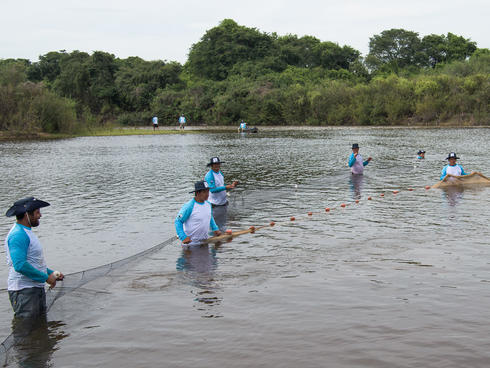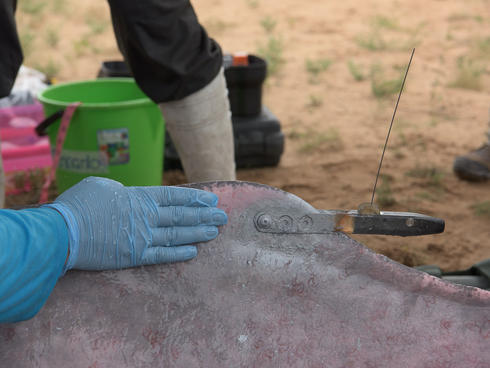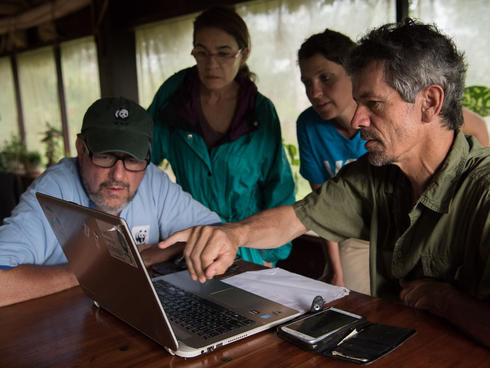| ||||||
|
| ||||||
| ||||||

For the first time ever, WWF and research partners are now tracking river dolphins in the Amazon using satellite technology—a tool that will provide new insight into the animals’ movements, behavior, and threats they face.
Scientists successfully attached small transmitters to 11 dolphins—including both Amazon and Bolivian river dolphins—in Brazil, Colombia, and Bolivia. The information gathered from the tags will help us create stronger conservation plans, better advocate for the protection of river dolphins and their habitats, and prove these animals depend on connected river systems for survival.
Despite the iconic status of river dolphins, little is known about their populations and habitats. Data from the tags will help us to better study what dolphins eat and how far they migrate, among other crucial information.
“Satellite tracking will help us better understand the lives of this iconic Amazonian species more than ever before, helping to transform our approach to protecting them and the entire ecosystem,” said Marcelo Oliveira, a WWF conservation specialist who led the expedition in Brazil. “Tracking these dolphins is the start of a new era for our work because we will finally be able to map where they go when they disappear from sight.”
The safe capture and tagging of river dolphins follows a rigid protocol that prioritizes the welfare of the animals. None of the dolphins were injured during the process and none displayed ill effects after release.
HOW WWF SAFELY TAGS A RIVER DOLPHIN


STEP 1: Fishers lay nets in areas where they’ve seen dolphins. The nets are huge and designed to enclose a large section of the river.
STEP 2: More fishers enter the water with smaller nets, gently corralling the dolphin into a gurney.

STEP 3: They carry the dolphin onto shore, where scientists have set up a makeshift camp.


STEP 4: Veterinarians and biologists take a variety of measurements and samples.
STEP 5: The scientists safely attach the tag to the dorsal fin. Attaching the tag is similar to piercing a fingernail; as the fin grows, the tag eventually falls off.


STEP 6: The river dolphin is released back into the water as quickly as possible.
STEP 7: The tag sends locations at least once a day, and is expected to transmit data for six months.
Learn more about river dolphins. Tell global leaders to cooperate on fresh water.













